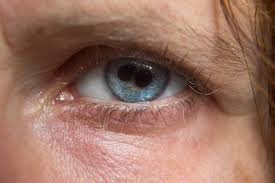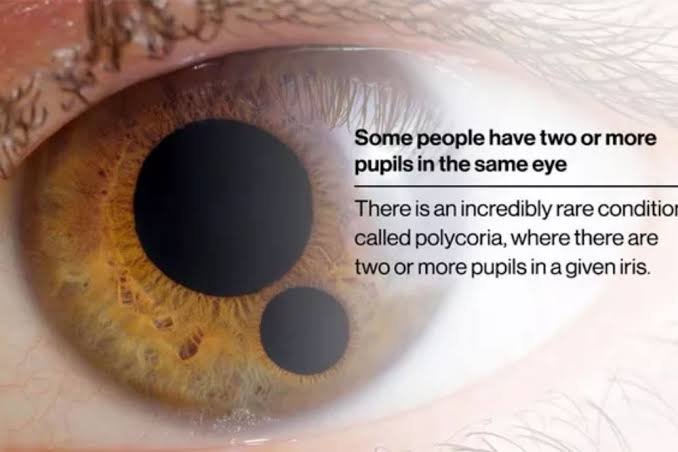A Rare Case of Extraordinary Eyes: The Science of Polycoria
The common image of two black pupils against a background of blue, green, or brown is what most people have in mind once they visualise their eyes. This isn't an issue, though, for certain folks. As a result, each of their eyes has more than two pupils due to a disorder termed polycoria. Polycoria, which is a significant, uncommon medical disorder of the eye, is characterised by many pupillary openings in the iris. In the affected eye, the disorder frequently results in blurry, dim, or poor vision. Despite the fact that it might appear unusual, this is a legitimate medical disease, and it's certainly not as uncommon as people may assume. I'll be going through what polycoria is, what it implies to have it, and additionally, what causes it and its the symptoms.
What are the types of polycoria?
There are two well known types of Polycoria namely:
True Polycoria: This type of Polycoria is known when one has two or more distinct pupils in one of the eyes. Every intact sphincter muscle will be present in every pupil. Individually, each pupil will contract and expand. Your vision could be impacted by this illness. It's incredibly uncommon.
Pseudopolycoria: in one's eye, there may appear to be two or more pupils. However, they lack individual sphincter muscles. Your iris seems to have more pupils when you have pseudopolycoria. Normally, these openings are only an iris flaw and have no effect on your ability to see.
What could be the possible cause of Polycoria?
None of the direct causes of Polycoria or any of its types have been discovered. One of the theories put forth is that the pupillary borders are severed after the sphincter muscle in the eye has fully matured and formed, allowing the additional pupil and the main pupil to be distinguished. Intrauterine trauma, also known as prenatal iris trauma, is a further theory that suggests the origin of polycoria.
What are the symptoms of Polycoria?
A single eye with two or more pupils is the most typical symptom of polycoria. Other symptoms, however, could include:
blurred vision in the eyes
dim or hazy vision
overly bright glare
What is the possible treatment of Polycoria?
There are certainly several methods for treating polycoria. The additional pupils can sometimes be removed surgically. Laser therapy can also be used in other situations to shrink the size of the additional pupils. Some polycoria patients don't require any kind of treatment because the condition doesn't impair their vision or create any other symptoms. Pseudopolycoria patients don't need to be treated because it doesn't damage their eyesight. Those who encounter vision problems as a result of this ailment need to contact a doctor very soon. One form of treatment for polycoria is surgery.
But because this medical condition is so uncommon, it might prove challenging to choose the most effective course of action.
Pupiloplasty is the name of the procedure where the surgeon removes the bridge connecting the pupils to treat polycoria.

Source
possible ways to prevent Polycoria
Additionally, there are certain procedures that could be performed to lower the probability of having polycoria, but there are no recognised preventive strategies for the condition. These consist of:
Avoiding eye trauma: It's crucial to take precautions to shield the eyes from trauma, as injuries to the eye might cause polycoria. When engaging in sports or using tools, this includes donning safety goggles.
Seeking treatment for eye problems: Polycoria risk might be increased by eye problems like glaucoma. Treatment for these ailments can aid in lowering the risk.
Refusing needless eye procedures, particularly for those pursuing fake attractiveness

Congratulations @eagle112! You have completed the following achievement on the Hive blockchain And have been rewarded with New badge(s)
Your next target is to reach 50 replies.
You can view your badges on your board and compare yourself to others in the Ranking
If you no longer want to receive notifications, reply to this comment with the word
STOPCheck out our last posts:
Is this eye issue genetic?
Polycoria has a hereditary component due to gene mutations, but eye trauma or disorders can also cause it. Regular eye examinations are crucial for early warning signs.
Thanks for your comment sir